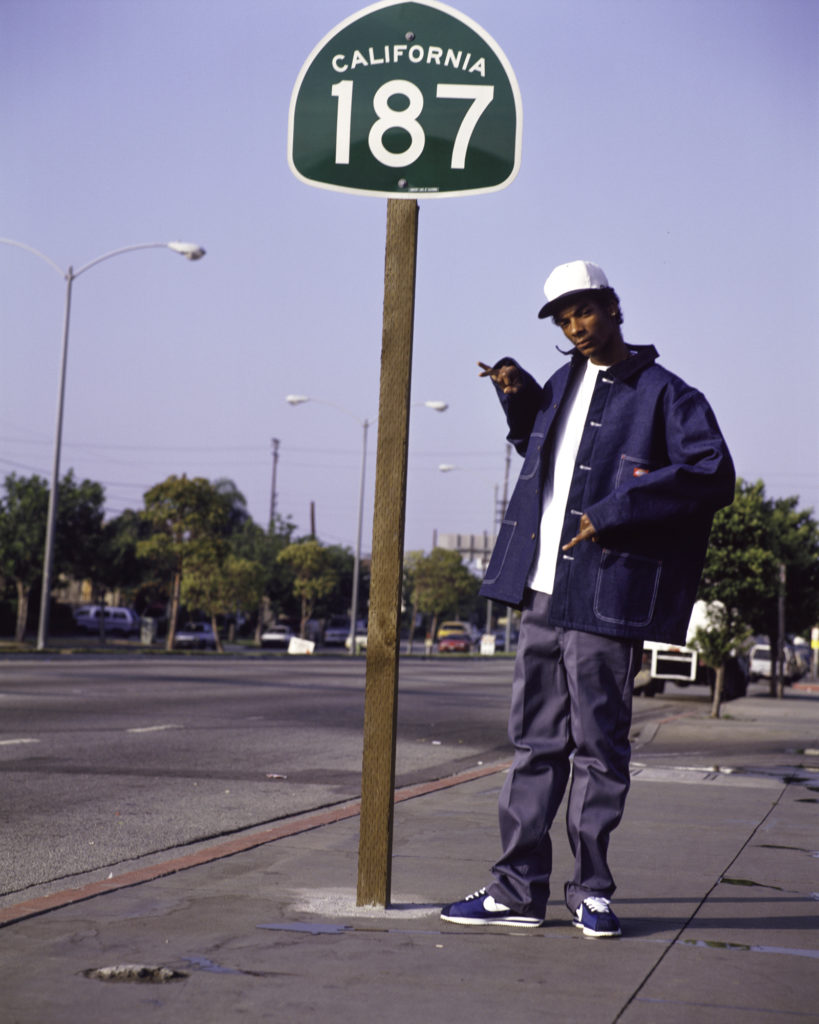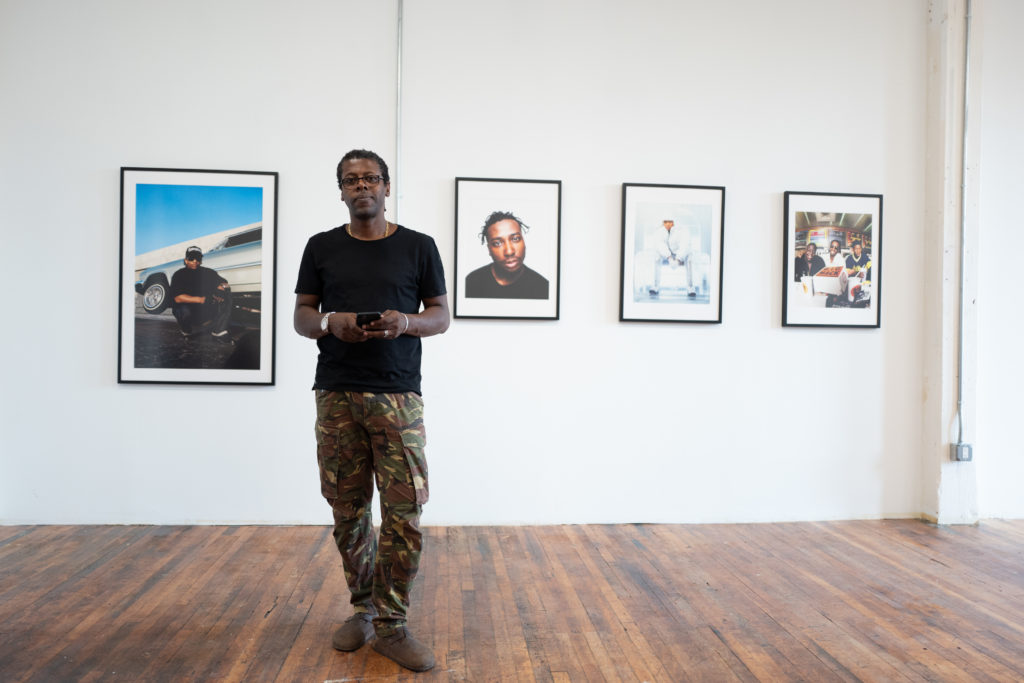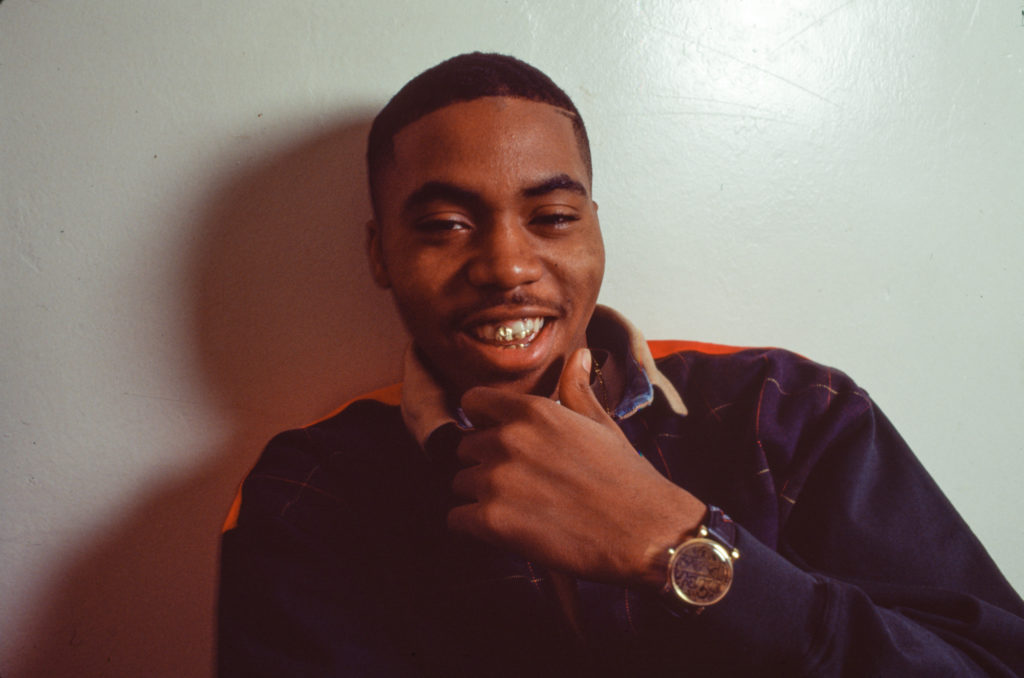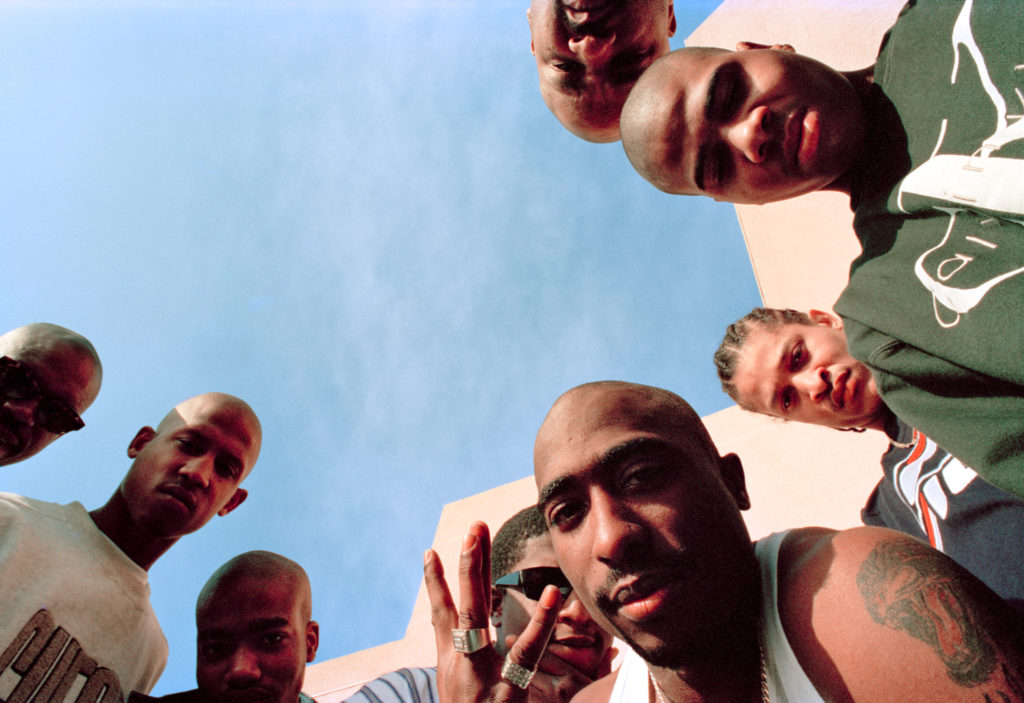Publishing date: Sep, 10, 2020
Mention Chi Modu’s name amongst the hip-hop crowd and numerous conversations will reverberate around how he managed to capture icons in their most memorable moments. Biggie’s famous photo in front of the Twin Towers? Chi captured that. The black and white photos of Tupac smoking and playing with his bandana? Chi captured that. Nas posted up in his childhood bedroom? Chi captured that. To put it simply: you just can’t talk about 90s hip-hop without mentioning Chi Modu.
Born in Nigeria and raised in New Jersey, Modu watched his father behind a camera lens in his free time—often shooting family portraits on the weekends after church. When Modu was finally able to save up and purchase his own camera in college, he got to work taking self-timer portraits. After landing a gig at The Source in 1990, he began to make connections throughout the music industry. It was a time when hip-hop was in its prime and names like Snoop Dogg, Eazy-E, and Dr. Dre were just getting their start. We talked to the famed photographer about getting artists to trust him, capturing them in their most vulnerable moments, and the movie script he is currently working on.

BeatRoute: How did you know from the beginning that you wanted to shoot portraits?
Chi Modu: I’m a people person, and to do good portraits, I think it helps if you’re a people person. I can talk to my subjects and get to know them to [a point] where they will drop all of the facades. Once you do that, the best picture you can take at that point is a portrait because then you’re getting to the essence of that human being, you know? That was always my goal. I rarely look at the surface of anything; I want to look and see who that person is.
I exude a bit of warmth in their direction, and it determines what they give back to me a lot of times. It’s not a schtick, it’s my personality. I come with my arms open, and because of that, my subject can be vulnerable because they’re safe with me. I think that gave me an extra advantage with my portrait work.
BR: Can you tell us how your time at The Source led to you connecting with the most prominent players in the music industry?
CM: The Source was coming in 1991-ish, and so they were very heavily focused on the purity of hip-hop music. They didn’t play with the purity of the music. Me and the art director, Chris Calloway worked together, and [we] were focused on how things looked. The Source benefited from that because we were both hardcore hip-hoppers.

Early on in [your] career, you make yourself available for everything because you want to be around. What happens is the artists start seeing you and recognizing you. Remember, a lot of these people weren’t famous until I showed up. I showed up because they hadn’t been acknowledged, and I’ve been sent to go capture [them] and [introduce them to] the world. I caught them at a time in their career where my role as a photographer was very, very important. At different phases in people’s career, photography isn’t as critical because there’s a lot of it. Those early pictures set the tone of who that person is.
BR: Besides being your natural warm self, how did you get the artists to trust you and really open up in front of your camera? Especially the ones who are more reserved.
CM: A lot of artists are young when they’re coming up, you know? Even Pac. I think he was probably about 22 [years old] or so, and I was three years older, which mattered at that time. I was [in their] peer group. I was never a fanboy, and artists can smell that a mile away because they’re used to people kissing their ass. That’s why you don’t see many pictures of me with the artists I photograph. You’ll see the ones with Pac, [but] there’s no picture of me and Snoop from back then because you just didn’t do that. There was no reason for it.
When you look at my work, the reason there’s not a lot of me with artists is because we didn’t look up to them, we were peers. If every time I see someone I’m like, “Hey, let me take a picture with you,” I’m allowing the power to shift, and I can’t let it shift because on my set, I have to be able to guide you and we have to work together. Even today, a lot of the younger artists won’t talk sideways in my direction because of the legacy of people who came before them. That gives me a certain status throughout the whole hip-hop space.

BR: You never watermark your photos. Why is it so important for you to make them accessible?
CM: For me to put myself between the public and the people that they idolize—I feel I’d be an asshole, and I’m not that dude. Yes, this is how I make a living, and I need to eat, but how do I look saying ‘you can’t get to these pictures of Tupac because I own them?’ Nah, that’s not hip-hop—that wouldn’t be right. Because of that approach, the amount of protection I get from the public is off-the-charts. I think the public appreciates that, and they see that I’m not in it just for my own personal gain. If I were, I’d have a much bigger house by now [laughs].
BR: How much unreleased work do you have?
CM: I try to share as much as I can with the public, but I mean, I probably have a quarter mill of photographs. I was completely obsessed with documenting my generation; everything else took a backseat, including my own life.
BR: At this exact moment, what is your favourite photo that you’ve shot?

CM: Oh, Pac smoking when he’s tying his bandana. It’s a picture I’ve seen over and over for years and I haven’t grown tired of it. Each year means a little bit more because it’s such a casual moment that ended up catching the essence of that person, and it wasn’t intended. It was just an outtake. In between [shots], I grabbed my 35mm camera, and that’s when I did those black and white shots. One of those was Pac smoking, and the other one was on the cover of Rolling Stone.
You never know where the [image] will come from, but you have to be ready for it. Like with Eazy-E flying down in his car, hopping it as he approaches my photoshoot. He didn’t tell me he would come screaming down the street and in a ‘64 [Chevrolet Impala], but I had to be ready so that when he did, I got the shot of him with his car in the air. And that’s a big deal. That’s Eazy-E from the culture.
BR: Have you ever thought about writing a novel? You have so many stories to tell.
CM: You know, that’s interesting. A novel is something I’m going to have to do as well, but I’m working on a movie script. I’m a behind-the-scenes guy, but there is always a point where the behind-the-scenes guy has to come out front. I’m at [that] point in my life now.
I [was the] guy in every single room. A lot of people got hired here and there, but I was in the Fifth Ward with Geto Boys, with Luke [Skyywalker] in Miami, with Dre and them in LA and Snoop and Suge [Knight]. I [was there] for all of that, and there aren’t many people who can go into all of those different environments and be comfortable. I think it’ll be cool; it’ll be funny. You know, my life is a little zany already—imagine some of the stories around these characters, they’re endless.

BR: We can’t even imagine. And you always grabbed the best shots. Always!
CM: I don’t care who you are, I’m leaving with the photo. If you’re Mike Tyson and you don’t feel like cooperating, I’m still leaving with the photo, so I’ll wait over here until you’re ready. I’m not going anywhere [laughs]. People can’t imagine, because people are scared to death of Mike Tyson, right? And this was right before he got his belt back, but I’m not allowed to be scared because I have to leave with the photo. We’re going to have a heart-to-heart so I can get done what I came to get done. And the baddest, biggest, toughest cat in the world, guess what he did? He sat for my photo after.
A year later, I saw him in Florida, and he was like, “Hey! Hey Chi, I got you something.” He handed me a pair of gold Cartier sunglasses. I was like, “My man!” [laughs] Classic. I think he is the only one who’s ever gifted me. He gave me a $1000 pair of sunglasses that I still have to this day. As a matter of fact, there is a photo where I am looking to the side—I think it may be my Twitter profile where I am smiling and I am wearing those sunglasses. I look rich as shit in it [laughs].

BR: One last question for you, Chi. What has been the most rewarding part of your career?
CM: Now that I’m getting a little bit older and I get to really reflect, it’s the impact that [my career] has had on so many diverse people from every corner of the globe. That’s the part that I couldn’t have predicted. At all. I didn’t know it would be this ubiquitous. That was a surprise. I knew [my work] was important, but I didn’t know I could be in a bar in Borneo and have someone say, “Are you Chi Modu?” I didn’t expect that. And that’s wild, right?

